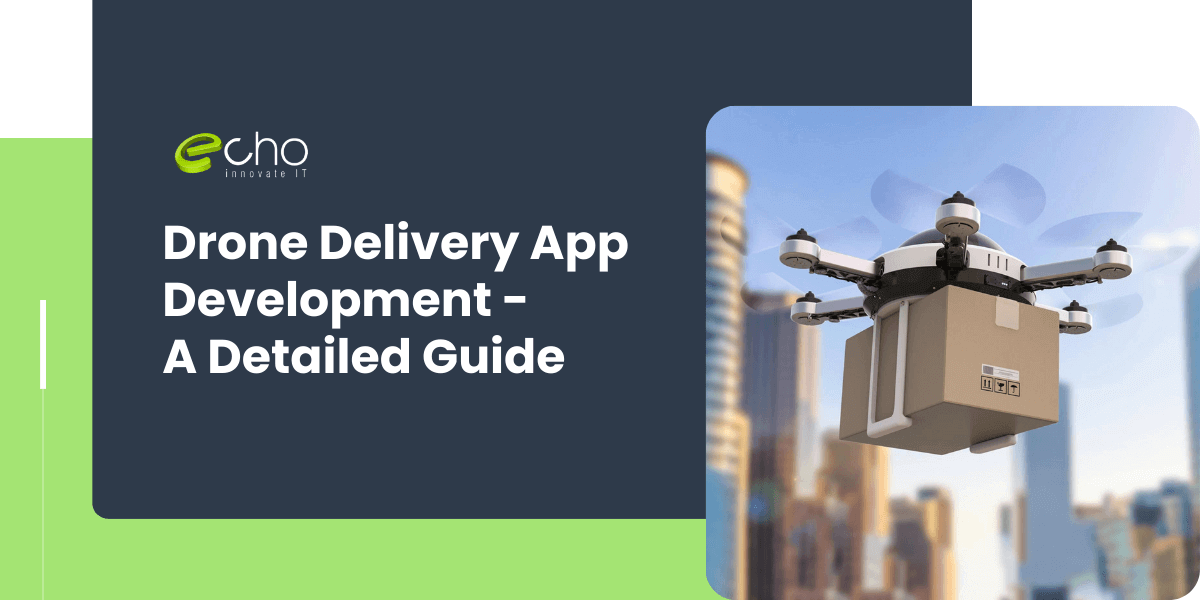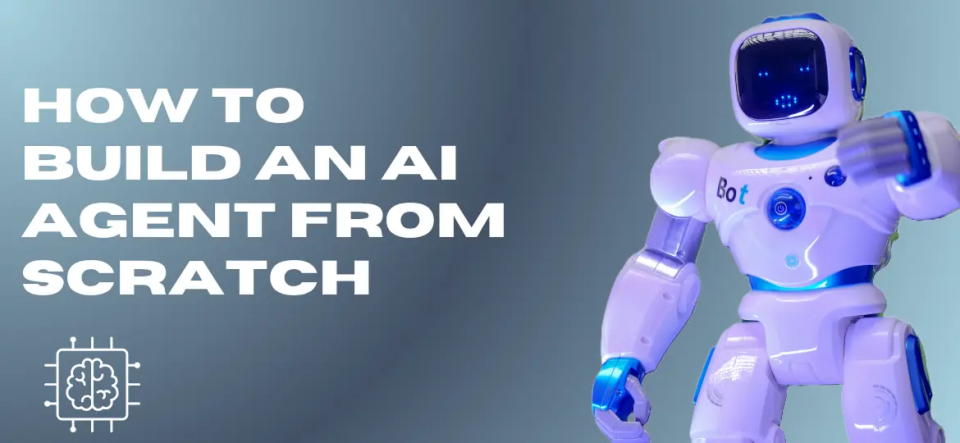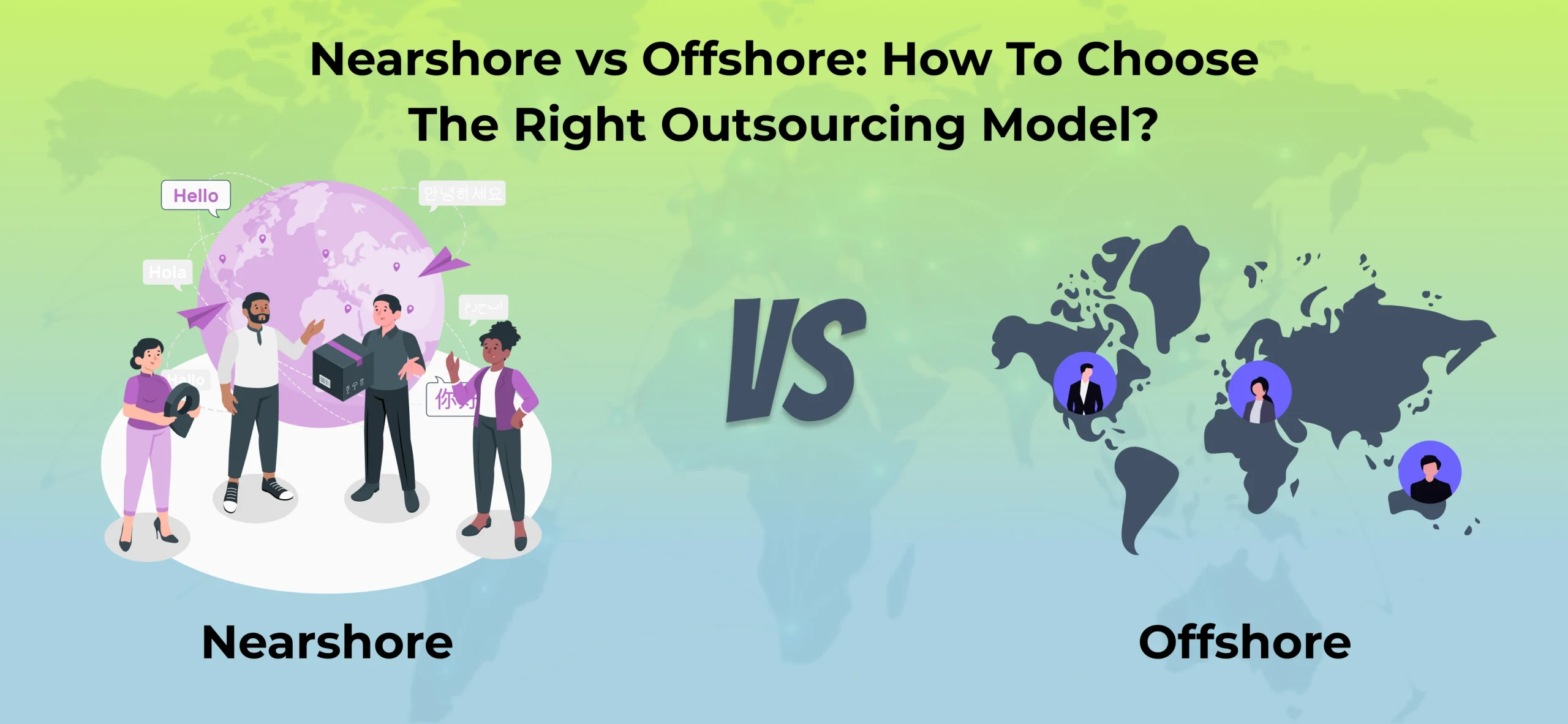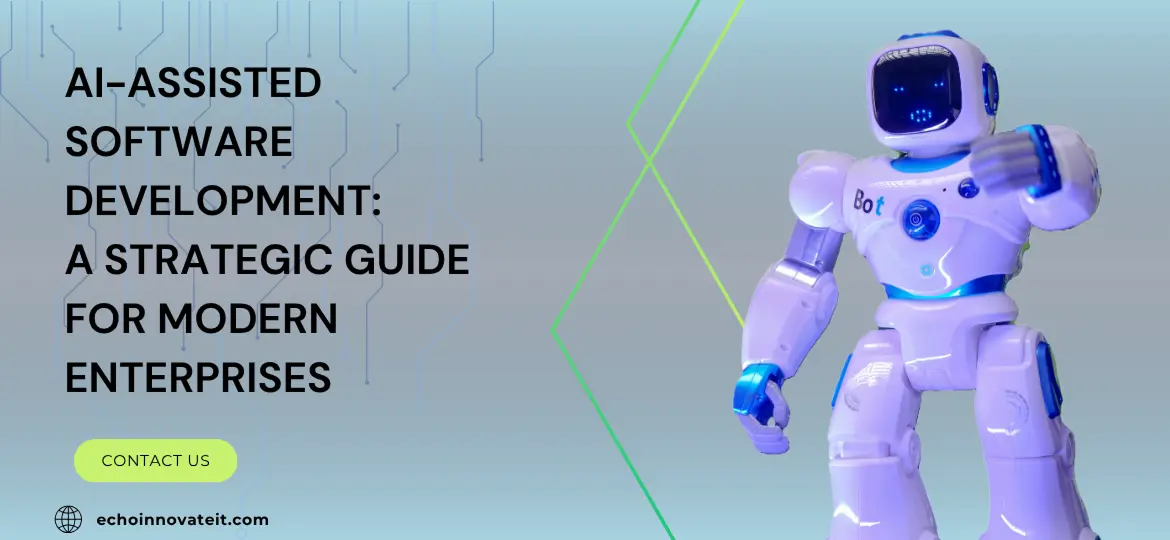A drone delivery app development can provide a unique service through which consumers can place orders for goods on their mobile devices and have them delivered by drone. This innovation of drones for package delivery has changed the delivery sector by providing a new, more efficient method of transit that is not constrained by the speed and distance of vehicles on the road.
The on-demand drone delivery app solution makes it simple for customers to peruse inventory and place orders. The user places an order using the drone delivery app, which notifies a nearby drone pilot in on-demand drone delivery system to pick up the item and fly it to the user’s location. Rather than taking hours or even days, as is the case with more conventional distribution techniques, drone delivery system can do this in minutes. Drones for package delivery have become more commonplace in several industries due to recent technological advancements.
Drone Package Delivery Market Size
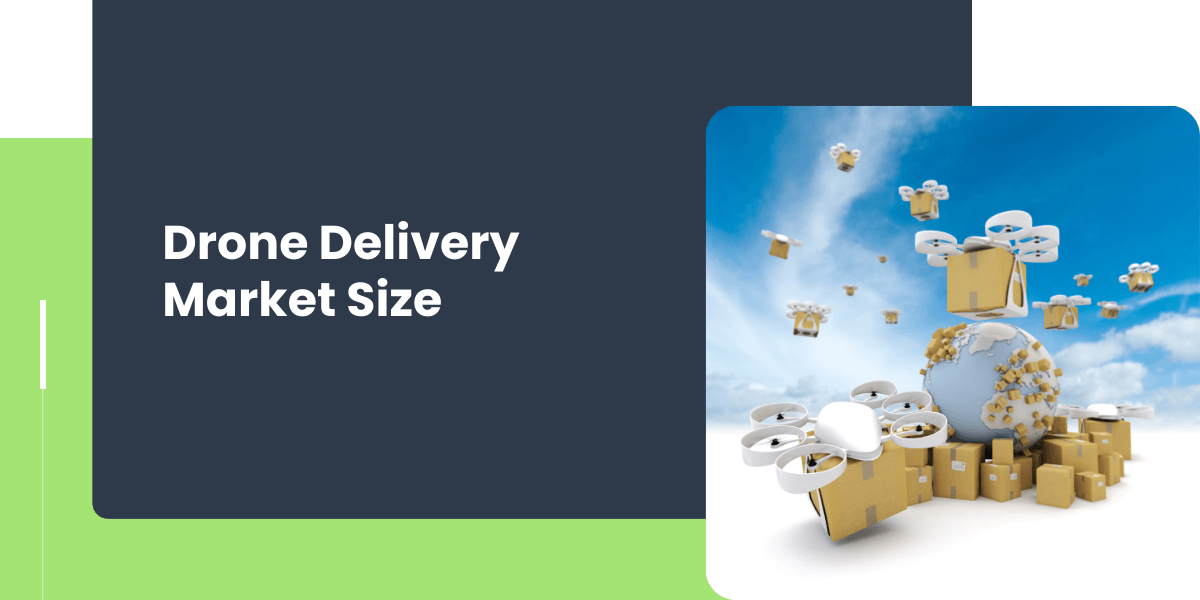
According to the most recent data, the global market for drone package delivery is expected to grow to $7,168.8 million by 2030, expanding at a CAGR of almost 47.8%. Given this expansion rate, we can confidently forecast continued demand for drones in package delivery. Anyone with ideas for developing a drone control application may try their hand at it. In this article, we will discuss the ins and outs of drone software development, including their features, how drone delivery service work, etc.,
How does Drone Delivery System work for businesses?
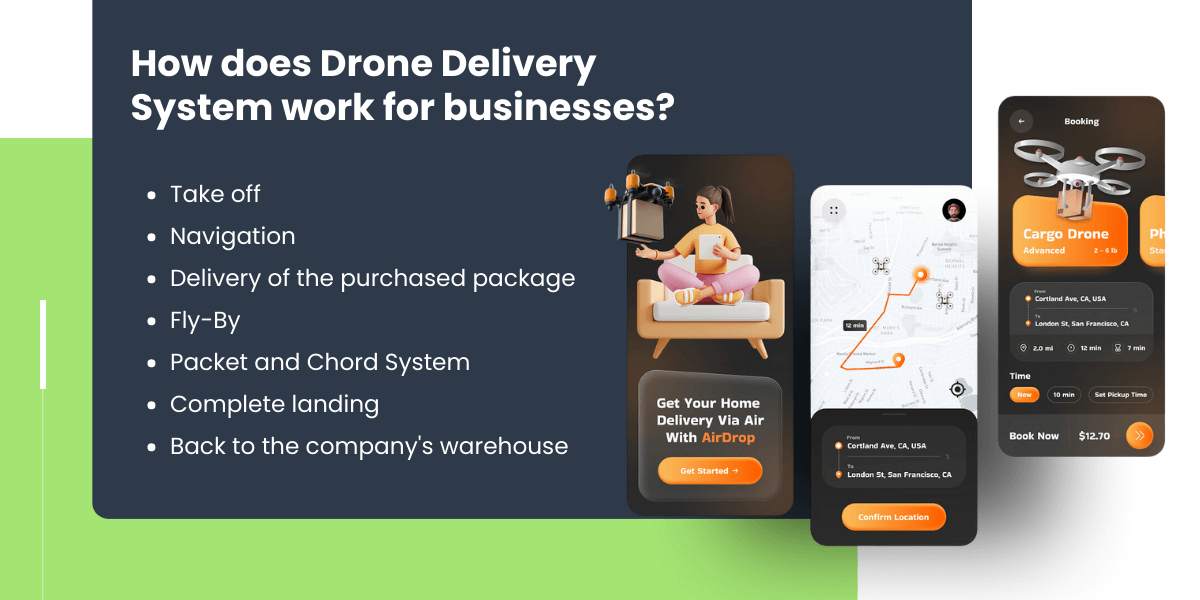
To save money, businesses may use drones to deliver items to consumers more quickly and securely.
Take off
Once an order has been made, the procedure may begin. The adjacent business immediately begins packaging the desired item in their warehouse using a box designed to be handled by a drone and sending it on its way.
First, the drone leaves the warehouse and flies to the client, carrying the customer’s purchased item suspended from its undercarriage. Drone delivery systems use a VTOL system (vertical takeoff and landing) to take and drop off packages at consumers’ doorsteps.
Navigation
To get to their consumers, drones must fly across densely populated, obstacle-filled zones. Drones may do this in several different ways. GPS navigation is a frequent function on drones used to pinpoint the end user’s location.
The drones’ cameras on their upper surfaces provide them with a visual field, while SONAR and RADAR technologies allow them to hear their surroundings. Drones can travel over inhabited pathways using various parts and features, allowing them to detect and avoid obstacles like buildings, birds, trees, and even other drones.
Delivery of the purchased package
Once the drone reaches the customer’s home, it has three options for securely delivering the package:
Fly-By
Drones deliver packages by bouncing them off the ceiling as they fly above the customer’s house. However, the contents of the package make this method particularly dangerous. Still quicker than any other drone delivery system.
Packet and Chord System
The drone does not immediately drop off the package when it reaches the customer’s location. Down down, it seeks refuge before making its way out. The consumer would designate that space, and the drone would be able to locate it using a QR code on a mat. Once the drone’s camera reads the QR code, it knows it’s in a secure area and can safely land. The package is brought down to the mat and dropped to the floor with a cord.
Complete landing
With this method, the drone flies to its designated landing spot, drops off the delivery product, and then takes off again.
Back to the company's warehouse
When the drone’s delivery mission is complete, it lifts off and flies back to its home base. After the landing, the company will prepare the drone for next-day delivery services. The organization does a factory reset and new battery tests.
Why Should You Create an On-Demand Drone Delivery App?
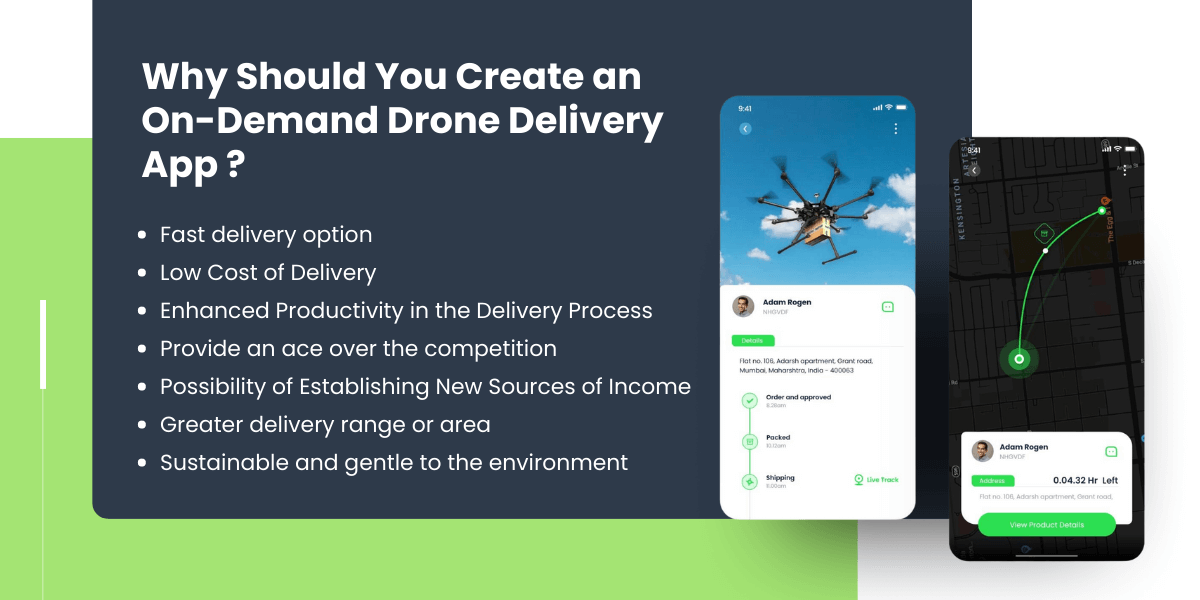
Building an app that allows for on-demand drone delivery provides a variety of advantages and potential for both consumers and enterprises. The following is a list of important reasons why developing an app for on-demand drone delivery might be a wise move:
Fast delivery option
Customers may have their items delivered in minutes rather than hours or days using an on-demand drone delivery app. This helps businesses cut down on the amount of time it takes to complete deliveries. This has the potential to result in greater levels of satisfaction and loyalty among customers.
Low cost of delivery
When it comes to delivery costs, drones have the potential to deliver products more quickly and effectively than conventional delivery methods. This can potentially lower delivery costs for both drone development companies and their consumers.
Enhanced Productivity in the Delivery Process
As drones can fly over congested areas and around obstructions in the road, they may make the drone delivery process becomes more effective and lessens the likelihood any delays.
Provide an ace over the competition
Providing clients with a delivery experience that is both one-of-a-kind and forward-thinking requires companies to differentiate themselves from the competition. One way to do so is by developing drone applications for delivery.
Possibility of Establishing New Sources of Income
An on-demand drone delivery app may open up new potential for companies to provide delivery services to a larger variety of consumers and items.
Greater delivery range or area
Since drones can travel large distances and reach isolated or difficult-to-access regions, this opens up more delivery alternatives for companies and their consumers.
Sustainable and gentle to the environment
Traditional distribution methods are responsible for more carbon emissions than drones, which means that using drone package delivery may be a more sustainable and ecologically friendly alternative.
If you create a drone app, it has the potential to provide a variety of advantages to both companies and their consumers. These advantages include shorter delivery times, reduced costs, enhanced efficiency, a wider delivery range, environmental sustainability, a competitive edge, and new income streams.
What are the Basic Features of Drone Management Software?
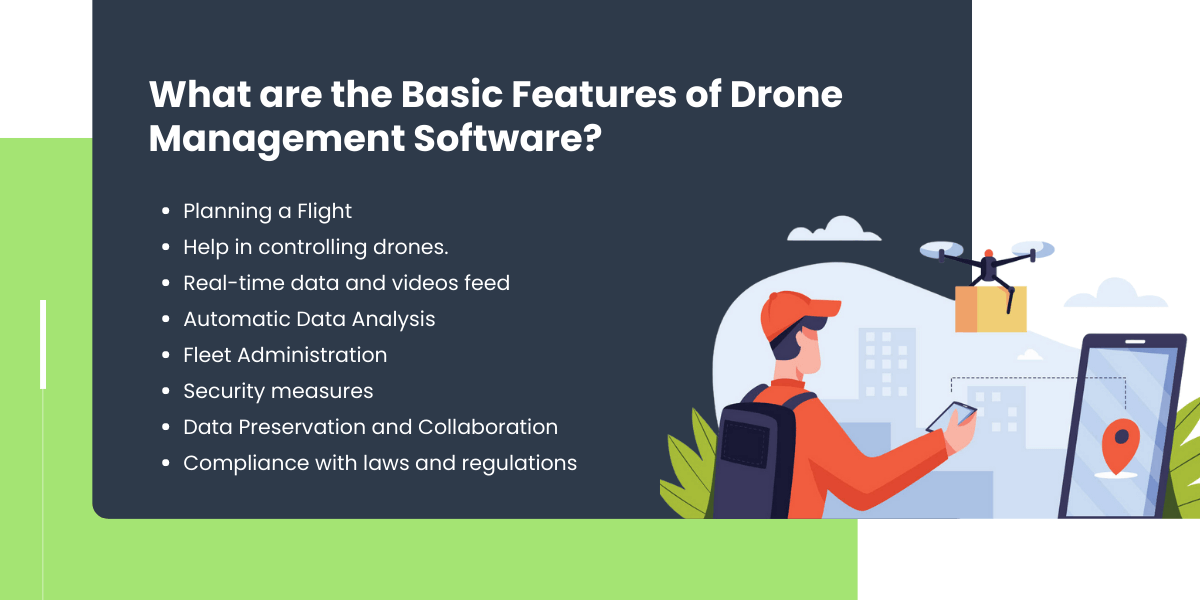
You need drone management software if your company uses drones for anything beyond simple aerial photography, such as surveys, inspections, or deliveries. The best drone management app will include these crucial features:
Planning A Flight
Users should be able to define flight characteristics such as flight route, altitude, and speed and schedule flights using the program. This function guarantees the drone can carry out its duties safely and effectively.
Help In Controlling Drones
The drone’s camera angle, heading, and speed should all be adjustable through remote control, a feature the software should make possible. This function helps ensure the drone is flying as planned and gathering relevant information.
Real-Time Data And Videos Feed
The user should be able to track the drone’s location and status in real time via the software and get data and video from the drone itself.
Automatic Data Analysis
Artificial intelligence (AI) and machine learning (ML) algorithms should be able to analyze the data acquired by the drone delivery automatically. This function has the potential to reduce analysis times and improve data quality.
Fleet Administration
Users should be able to control a fleet of drones using this program, keeping tabs on their health and performance as they send them out on missions.
Security Measures
During drone delivery app development, the software should include safety measures, including the automated return to home in case of signal or power failure and geo-fencing to prevent it from entering prohibited airspace.
Data Preservation And Collaboration
Users can safely and conveniently exchange drone data gathered by the program.
Compliance With Laws And Regulations
With drone management software, users can get the required permissions and follow airspace limits.
The drone app development process should prioritize the safe, efficient, and effective use of drones. The capabilities above may assist businesses in optimizing their drone operations in terms of both safety and legality.
Advanced Features of Drone Management Software
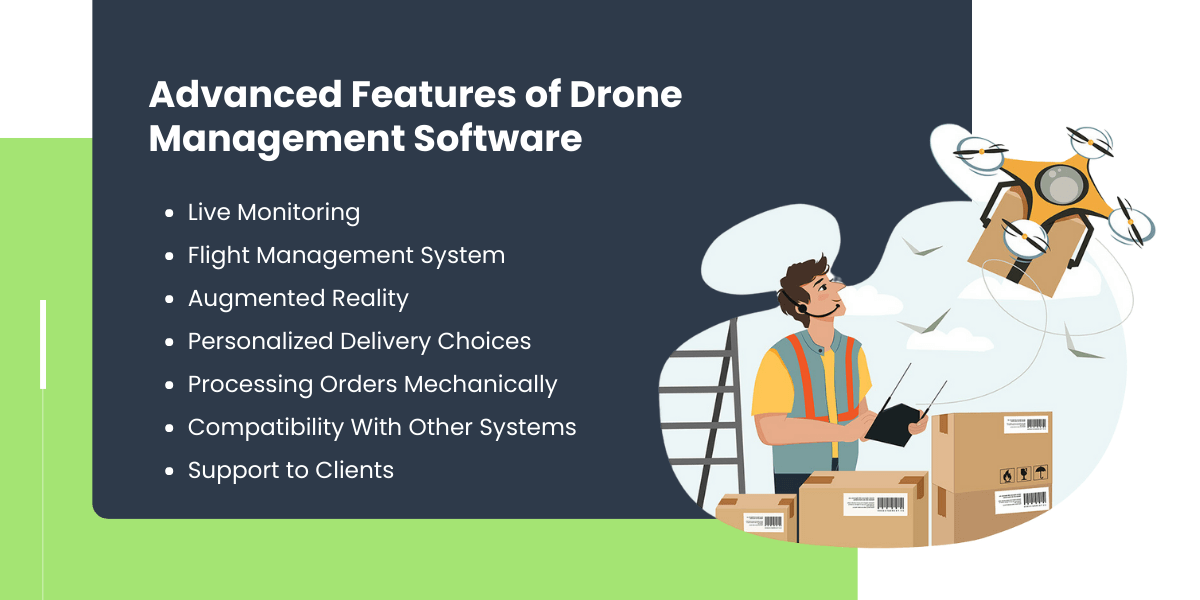
The delivery procedure and the user experience may benefit from including many sophisticated features in a drone delivery control app. The following are examples of advanced functions that might be included in a drone delivery app:
Live Monitoring
Thanks to the drone control app’s live updates on the drone’s position and delivery status, customers will be able to see exactly where their shipment is in the delivery process and how long it is expected to take.
Flight Management System
The drone delivery app may automatically control the drone’s flight route and height, allowing it to avoid obstacles and fly more effectively.
Augmented Reality
A drone control app uses augmented reality technology to show the position of the drone and its delivery progress in real-time, making the delivery process more interesting and participatory for clients.
Personalized Delivery Choices
Customers have more control over their delivery experience because of the drone delivery app’s ability to save their preferred delivery address and time.
Processing Orders Mechanically
The program can handle orders mechanically, eliminating the need for human intervention and speeding up delivery.
Compatibility With Other Systems
The on-demand drone delivery app solutions can sync with logistics and e-commerce systems for streamlined data sharing and an enhanced delivery experience.
Support To Clients
Customers with problems may get assistance from chat bots or real-time support via the drone delivery app.
Back To The Company's Warehouse
When the drone’s delivery mission is complete, it lifts off and flies back to its home base. After the landing, the company will prepare the drone for next-day delivery services. The organization does a factory reset and new battery tests.
Top Industries that use Drone Delivery Apps to generate revenue
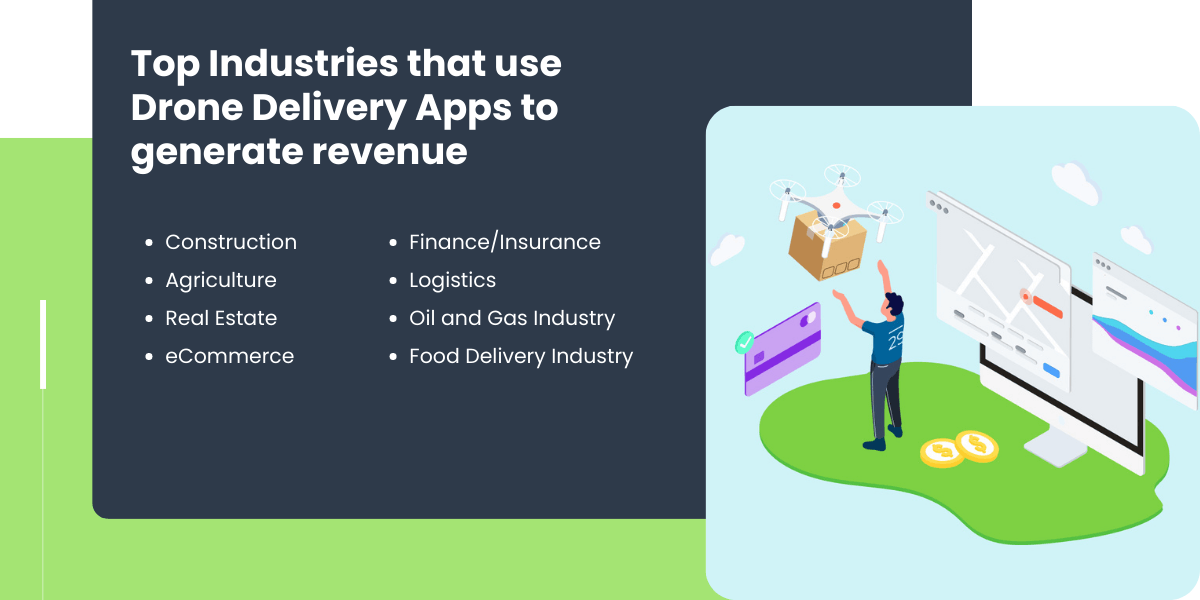
The usage of drone delivery systems dates back at least two decades. Drone delivery, however, is likely to grow, prompting drone management software creation.
Drone Delivery For Construction
Benefiting the construction industry, the drone delivery system performs real-time inspections, allowing site owners to assess sites and apply adjustments if problems are discovered. Drones, in particular, can watch for unintentional dangers, preventing widespread devastation. This helps construction sites save money by reducing the time workers need to spend on repetitive tasks.
Drone Delivery For Agriculture
Agriculture drone use includes the Collection of information for purposes of analysis (such as irrigation mapping, soil analysis, soil composition, etc.); carrying out tasks (such as planting and sowing); and assisting with monitoring and checking their whole area from a central location. Commercial drone technology is widely regarded as one of the most promising agricultural developments, with applications ranging from seed bending and pesticide spraying to weed control and beyond.
Drone Delivery System For Real Estate
With the advent of drone delivery systems in the real estate industry and high-quality cameras, firms will have more opportunities to take photographs and films of properties.
Drone Package Delivery In ECommerce
Small and medium-sized firms (SMEs) are just as adept at harnessing the potential of drone management software as their larger counterparts. Drones are being used to deliver goods to clients by a wide range of eCommerce firms, including food delivery applications, on-demand grocery apps, and more. The idea of delivering online purchases by drone is not new, but it has just caught on. It ensures the distribution of products is quick, safe, and easy.
Drone Delivery System For Finance/Insurance
The financial sector and insurance companies were the first to employ drones for inspections in 2015. Recent technological advancements have been crucial to the success of drone delivery systems. By streamlining the claims process, these solutions help businesses see a greater return on their investment in a shorter period.
Drone Delivery Apps For Logistics
Drone delivery excels in the logistics industry’s supply chain and home delivery areas. This kind of distribution mechanism saves money and time for businesses. Customers profit from drones in the same ways that companies do.
Drone Delivery For Oil And Gas Industry
Companies in the oil and gas industry are increasingly turning to uncrewed aerial vehicles (UAVs) for a wide range of tasks, including routine maintenance, leak detection in pipelines, and emergency response.
Drone Delivery In Food Delivery Industry
Drone food delivery is still in its early stages in certain areas, while others have cornered a sizable share of the industry. Drone food delivery would be widely praised since it would let people satisfy their hunger more quickly.
Big companies that use Drone Delivery Systems
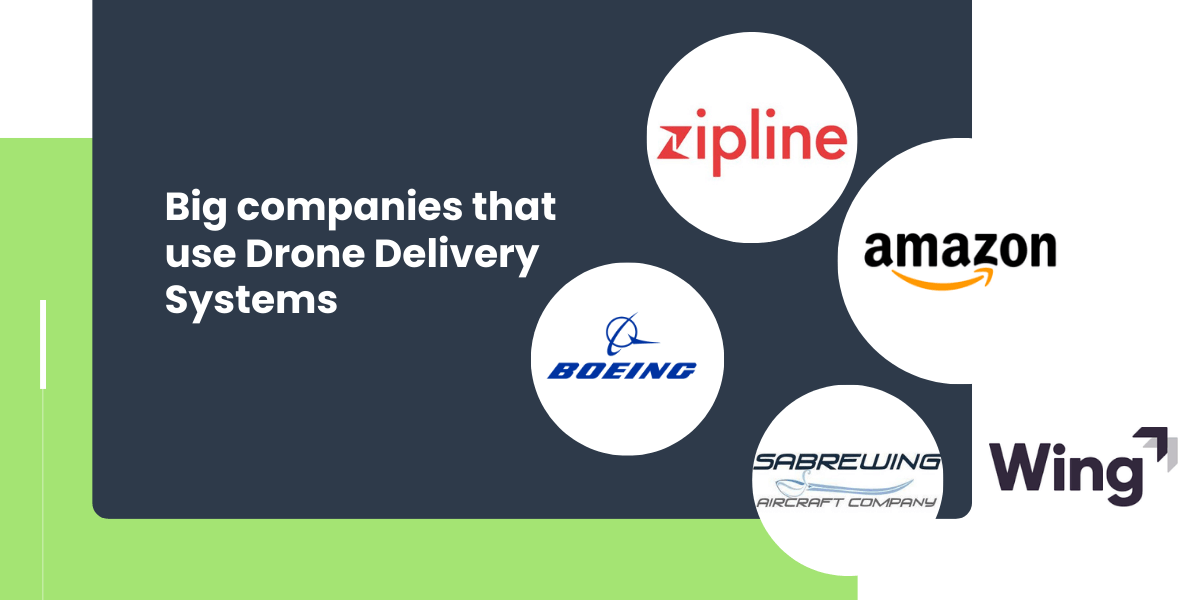
Companies are spending time and money to test out drone delivery systems and get them functioning for package delivery. Let’s see if any big names pop up:
1. Amazon
Using a hexacopter/quad-designed drone with vertical takeoff and landing (VTOL), Amazon has begun testing prime air deliveries in the United Kingdom. Amazon’s drone is fully autonomous and can deliver in less than half an hour.
2. Zipline
Zipline, a drone delivery firm, has almost finished its operations in Rwanda, Africa. Zipline drones are unique in comparison to those of other manufacturers. They feature a single horizontally positioned propeller and large wings.
During preflight preparation, the drone’s battery is never linked to the GPS module’s satellite or battery pack. This shortens the typically 10-15 minute period required for the GPS module to establish a connection with the satellite.
3. Wing.Com
The Wing drone has 14 propellers: 12 on top and two positioned horizontally on the wings, with locks designed only to accept packages of a certain size and shape designed to fit the drone.
It delivers the delivery to the customer’s home using the packet system and a cord. In a strict sense, the drone never touches the ground. It flies up to the designated delivery area, stops, and then lowers the gift to the ground. Finland, Australia, and the United States have all successfully tested wing drone delivery.
4. Boeing
Boeing’s origins in drone delivery systems return to its core concentration on long-distance freight transportation. Experience in this field is something Boeing already possesses thanks to the release of “Wingman,” a military fighter jet drone.
5. Sabrewing
Sabrewing has already rolled a drone, the Rhaegal RG-1, on the route to building larger drones with massive cargo-carrying caliber. Cargo drones like these, which can transport 5400 pounds at 200+ knots/230 miles per hour, seem like a fantastic alternative to cargo vehicles and massive trucks. It will be the ideal alternative to freighter aircraft and ships one day.
Tech Stack of On-Demand Drone Delivery App Development
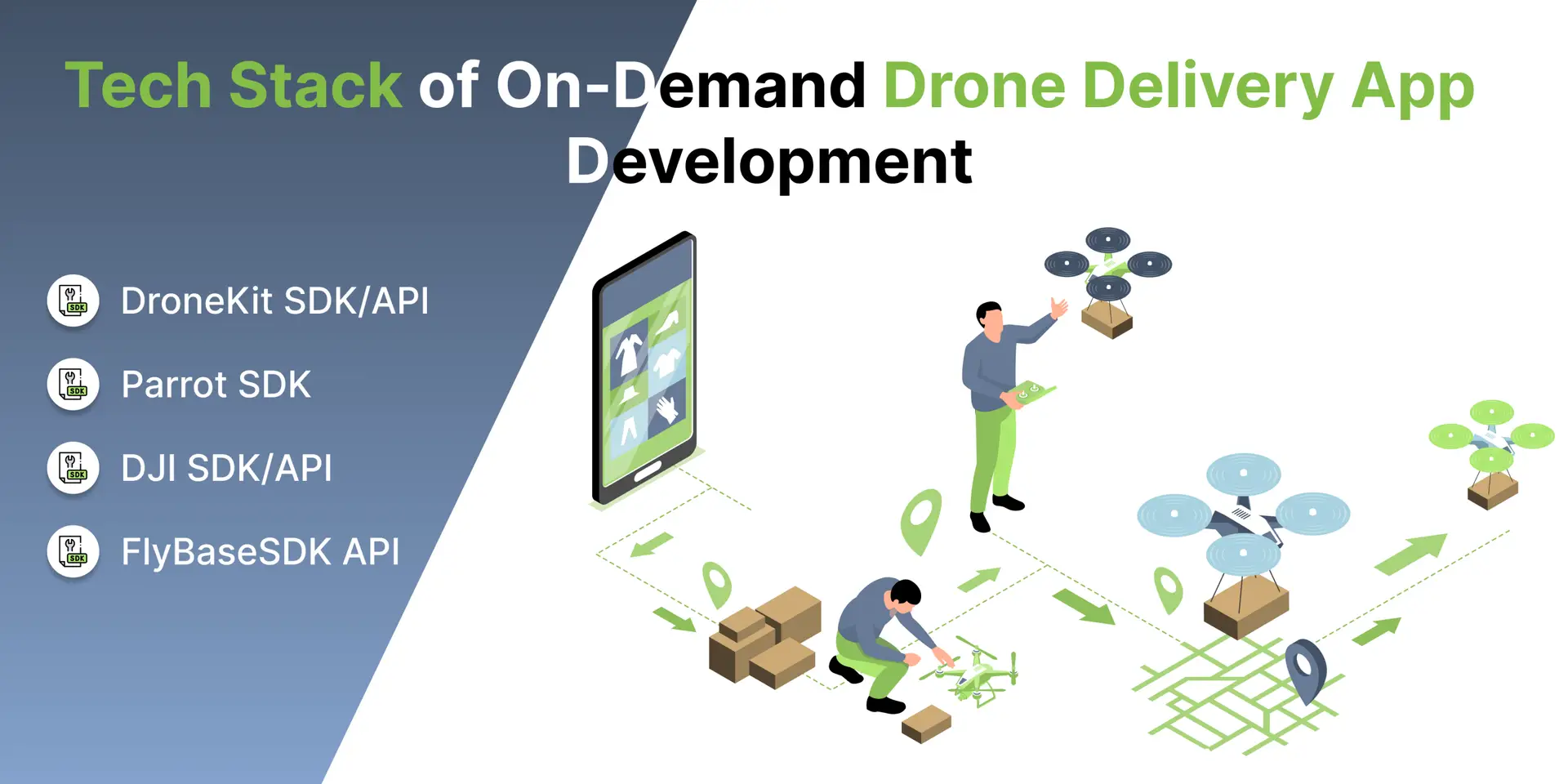
Use the following tools and technologies to create drone delivery control applications, mapping software, inspection software, photogrammetry software, delivery apps, and more.
DroneKit SDK/API
Drone delivery app development requires a 3D Robotics platform. It aids in incorporating capabilities like course planning, live telemetry intelligence, and autonomous flying. It’s a free API for creating bespoke drone applications with extra features.
APIs allow applications to store and exchange data logs for seamless connection to construct better real-time drone controller software.
Parrot SDK
Parrot SDK, another drone controller API, enables drone app development companies to use open code repositories and reproduce them into the application framework. Append it to your app to control your drone, obtain live streaming data, submit autopilot plans, update your drone, and store media and other important documents.
DJI SDK/API
DJI is a major drone app SDK. It has several real-time user experience elements. APIs help find obstructions, control life video streams, provide camera monitoring, provide battery support, and more.
FlytBaseSDK API
FlytBase, a popular drone SDK, enables developers to create amazing drone delivery apps they control. Its standalone business of on-demand drone delivery app solution includes cloud services, sensors, security, business administration, sheet management distribution, and more. FlyOS and other SDKs and APIs reduce collisions and optimize video streaming.
How Much Does It Cost drone package delivery business?
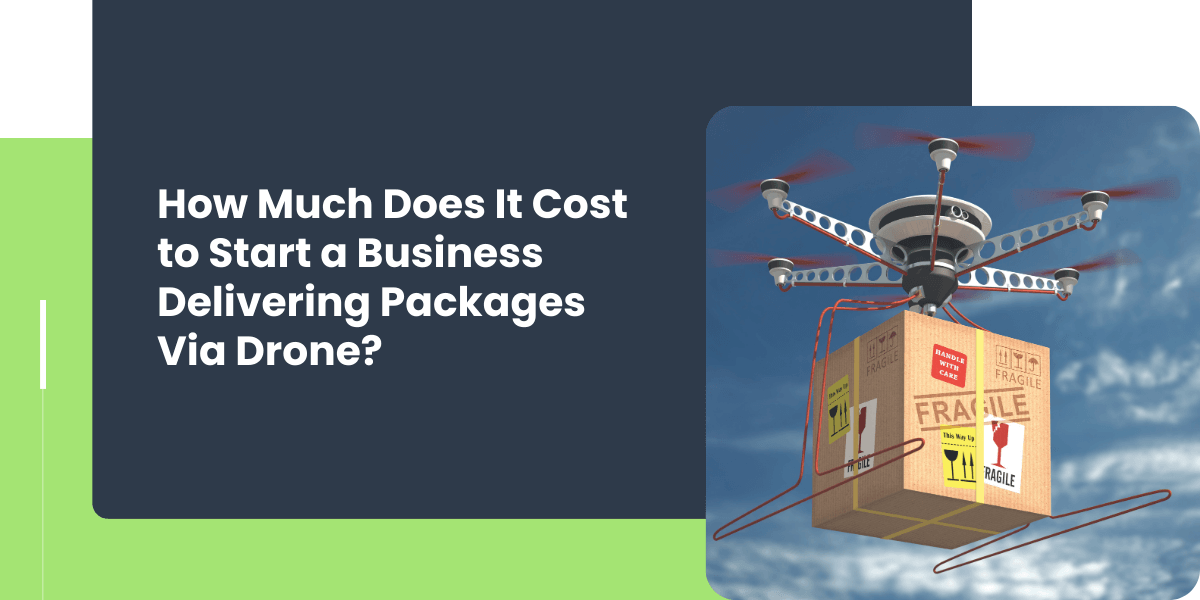
Starting a drone delivery service ranges from $3,000 to $25,000. The drone delivery app development company will provide you with exact pricing since it depends on various elements, such as the areas of delivery, the features you want to add, and many more. It would help if you got in touch with a top mobile app development company in order to get fixed pricing.
Final Thoughts!
People would prefer this drone delivery method exclusively until drone delivery becomes more widely accepted. It is the ideal moment for you to choose and hire the best iOS app developers for your company to plan and create a drone delivery app. When beginning a company that involves the delivery of packages by drone, you can select any of many niches, such as the delivery of flowers via drone, alcohol through drone, groceries via drone, food via drone, and many other options.
If you plan to build a drone delivery app, Echoinnovate IT can offer the best resources. Hire best Android app developers to make your dream app development a reality. Contact us today.
FAQs
How much does it cost to build a drone delivery app?
The cost of developing a drone delivery app depends on various factors and different aspects of the development life cycle. The factors include app size, complexity, type and number of features, UI/UX design complexity, etc. The cost of the development partner also affects the total cost.
How long will it take to build a drone delivery app?
The time required to build a drone delivery app depends on its size and complexity. Generally, it takes 4-6 months to develop the app.
How do you keep our app data secure?
We sign a non disclosure agreement to keep your confidential data secure and private.
Do you provide post-launch support and services?
Yes, we offer complete post launch support and services to keep your app running smoothly and error-free.
